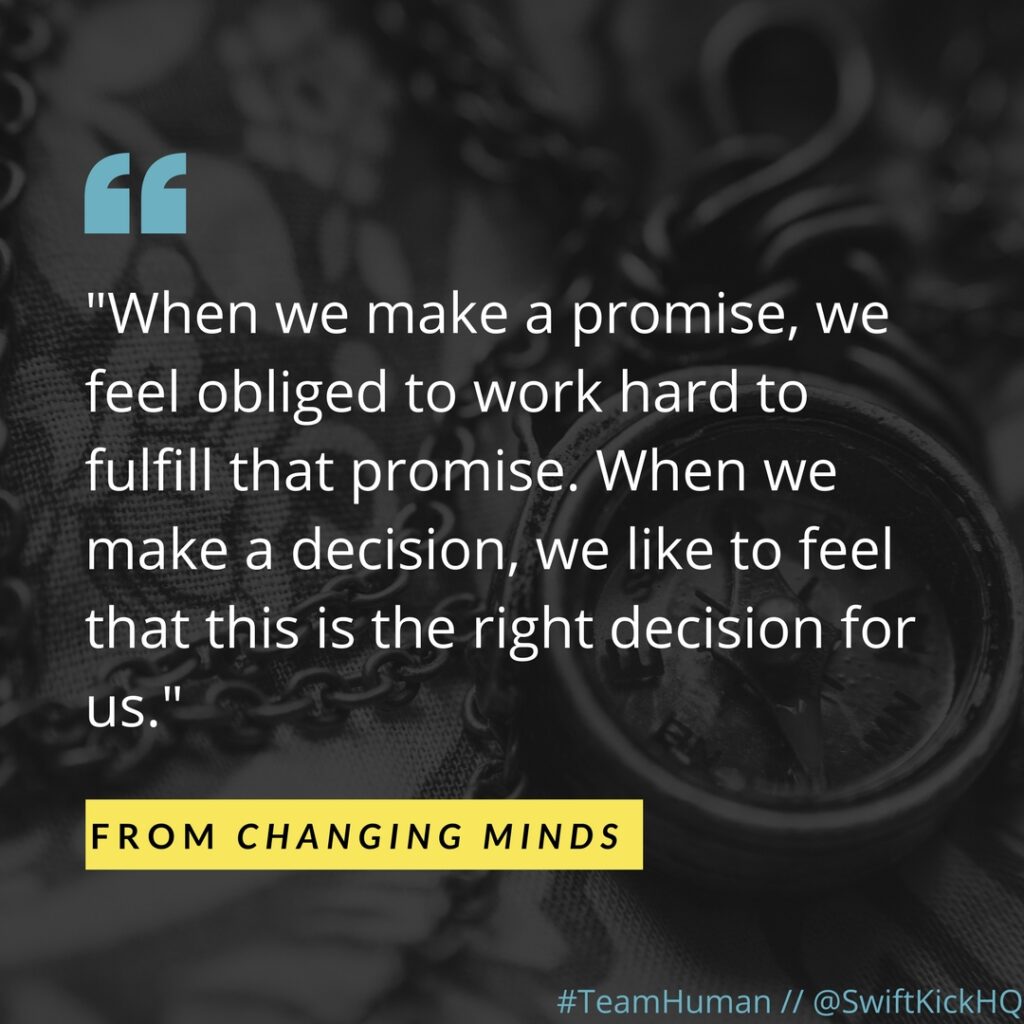Leading up to the national elections last year, I received a series of text messages on my phone. Most of the texts were informational regarding polling locations and deadlines. One text, that came the day prior to election day, caught my eye because it asked me if I was planning to vote tomorrow and asked me to reply with a “Yes” or “No.” I replied with “Yes.”
Of course, it’s in the best interest of my candidate to get as many people to vote as possible. I didn’t realize, however, that they were using a bit of mental trickery, beyond just a reminder, to make sure I voted the next day.
Getting people to do more than what is expected of them can be challenging. The research backs this up because a 2014 Gallup poll showed that only 13% of employees are “highly engaged.” A NSSE survey showed that only 40% of students will participate in a university sponsored activity outside of their normal classroom work. However, highly engaged employees and involved students correlate with higher productivity and retention rates. Clearly, it’s in a leader’s best interest to get more of their members engaged. But how?
One trick is to take advantage of a cognitive bias called The Consistency Principle.
As explained by Changing Minds*, here’s what it means:
“When we make a promise, we feel obliged to work hard to fulfill that promise. When we make a decision, we like to feel that this is the right decision for us.
When we do something that is out of alignment with our beliefs, values and other aspects of our self-image, we may change those inner aspects in order to restore alignment.”
Let’s take an example from students at college.
At the start of a school day, professors survey the class on campus involvement. The survey should ask questions such as:
a) Which of these three campus clubs most interest you? (Give several examples)
b) How many campus events would you like to attend this semester?
c) Did you know being a part of a campus club can take as little as 1 hour a week? Which day of the week are you most available to participate?
Then later in the day, have a campus club fair in a popular area on campus. The students from the surveyed class will have already made a pre-commitment to participating outside the classroom.
Let’s take an example from employees at work
If a leader were to come up with a series of goals for his/her employees, then the employees would not have their own buy-in or commitment to the goal. Instead, prior to the start of the new quarter, the team leader has each team member come up with a set of goals for themselves and their work. After reviewing the goals with the employee, create some sort of agreement ritual to foster a sense of commitment between the employee and the goals.
In both cases, the people had to commit to something prior to the moment of action. By pre-committing, they will then want to continue their consistency and thus are more likely to follow through.




